
‘Like the Pohutukawa
Dignity is ageless
And bows only
To the mighty sea
To the mighty ocean
Rēhua te Tāne
Whitirea te wahine
Lovers on a still
Moonlit night’
Poem by Saana Waitai-Murray
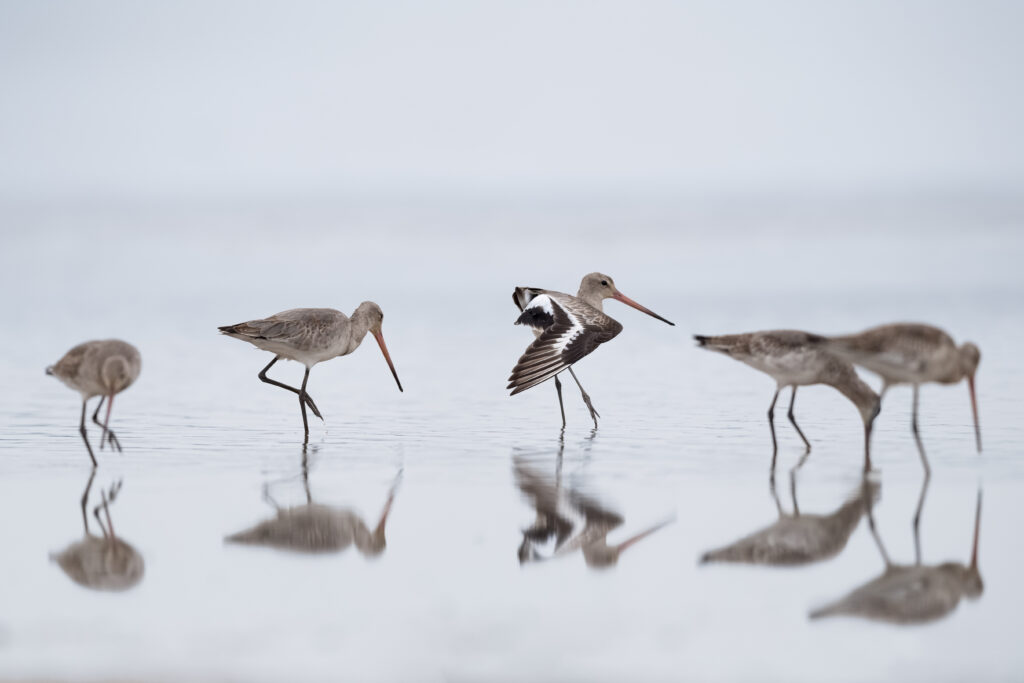
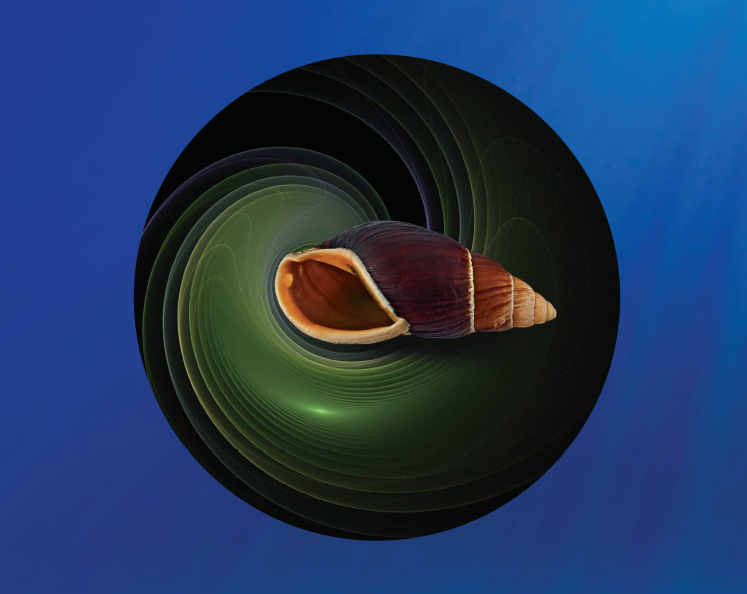
STATUS: AT RISK
The Kuaka is a migrant bird that visits Aotearoa. It is a large, long-legged wader, predominantly brown above, pale below, with a long tapering and slightly upturned bi-coloured bill, pink at the base and black towards the tip. Kuaka breed in western Alaska and migrate to New Zealand and eastern Australia. They are distributed around the country with some birds visiting at almost any harbour or estuary. Kuaka predominantly forage on soft intertidal substrates but may also be found probing in wet pasture.
Kuaka are fully protected in Aotearoa and the bulk of the population have, in the past, been visible at larger sites: Pārengarenga, Kāipara, Manukau, Firth of Thames, and Farewell Spit. However as noted in the Ornithological Society of New Zealand (OSNZ) report below there has been an alarming decline in kuaka populations at Pārengarenga – the pri mary driver of which is extensive habitat loss and degradation of ecosystems.
Ngāti Kuri has instigated several initia tives to be put into action. Data collection and research was conducted alongside OSNZ in October 2018. Ngāti Kuri hope to build relationships and work with re gional councils and DOC to commission further research at Pārengarenga and determine impact assessments required for issuing resource consents.

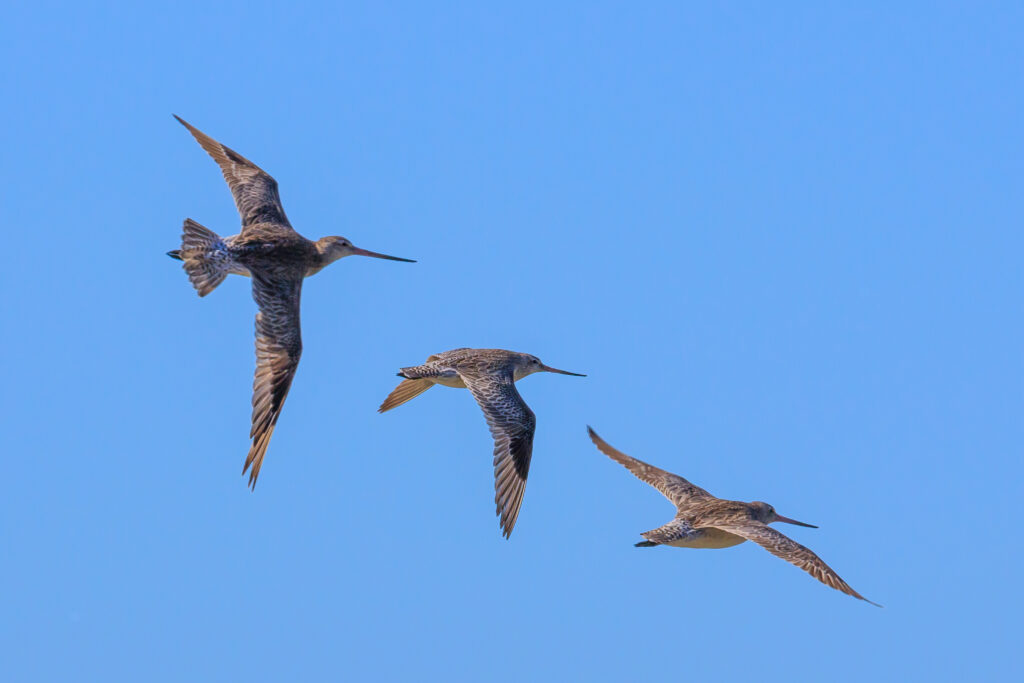
The Ornithological Society of New Zealand (OSNZ) studies the life cycles of wading birds across Aotearoa twice a year (Feasey 2018). Recently, Les Feasey wrote a report for the OSNZ revealing alarming statistics relating to kuaka. Kuaka belongs to a group of birds that are waders. Waders live and feed near shallow water in estuaries, harbours, mudflats, beaches, lakes and rivers. The Kuaka (godwit) belongs to this particular species of birds, OSNZ has discovered that the Pārengarenga population of waders such as the kuaka has deteriorated at a catastrophic decline of 85% in the last 5 years.
Ngāti Kuri have been aware of the declining populations of these manu for many decades (see Waitai-Murray 1974).
In August 2018, Ngāti Kuri attended an OSNZ meeting in Mangonui, Te Hiku o te Ika. At the meeting Ngāti Kuri asked “at what rate was the Kuaka declining?
OSNZ reported that kuaka numbers in the Pārengarenga have declined at an alarming rate of approximately 1000 birds a year (Feasy 2018). In 2013 4500 birds were counted – in 2017 only 700 kuaka were counted.
This is an 85% decrease in the population of kuaka. OSNZ warns that if this continues the population of kuaka at Pārengarenga will be wiped out (Feasy 2018). Nationally, Aotearoa is losing 2000 kuaka a year. The OSNZ reports that half of these, 1000 kuaka a year, are lost from Pārengarenga. This has a devastating impact on Ngāti Kuri cultural and spiritual relationships with the taiao and taonga species.
In October 2018, Ngāti Kuri conducted a survey of kuaka in Pārengarenga. The findings determined that there were no kuaka visible. September/October are the seasonal arrival months for migra tory waders. The survey was conducted on the same day in another location, Miranda Firth of Thames, where 2,310 kuaka were counted, providing evidence that the migration of waders to Aotearoa was in progress. OSNZ, again, warns that if there is a remnant population of kuaka it will take many years to re-establish former kuaka population levels.
One day, Tāne noticed kuaka was unusually quiet and looking quite sad. This worried Tāne and he asked “Kuaka, why are you so pōuri, what’s wrong? Kuaka said: “I’m getting tired of telling the same old stories, everyone has heard them”. Kuaka had explored his world fully and there was no new information to be gathered. “I wonder if there is anything out there across the ocean, anyone else like me, and anything new to see”.
As Tane listened to his beloved, he knew that, for Kuaka, seeing new things would fulfill his desire for adventure. But he also knew that he himself, and all the creatures who loved him, would miss him dearly if he was to fly away yonder and not return. Tāne looked at his Kuaka and said: “Here’s what I can do for you Kuaka, close your eyes and go to sleep and I will have a surprise for you when you wake.” As Kuaka slept, Tāne slipped a stone into his throat and when Kuaka woke Tāne told him he could now travel in search of new stories. Kuaka was delighted, he was to travel past Hawaiki-Nui and Hawaiki-Roa and further beyond to Hawaiki-Pamaomao. Through his travelling, he would quench his thirst for adventure.
Tāne gave Kuaka clear instructions, do not eat from any of the lands you visit or fly over, only take from the sea. I have spoken to my brother and he will be there for you, should you get tired he will rise up support for you. Now, Kuaka, you go and chase the sun, but there is one condition, when you feel the pull of the stone that I have placed in your throat from this land, you must return to us, to your homelands and bring your stories and share all your knowledge with your whānau, all of us that will wait here for you.
Finally, Tāne warned him again not to take any food from strangers on his journey, he was to eat only from Tangaroa’s food basket when the time came. Kuaka thought deeply before he left on his adventure. He loved his home and whānau and it was hard to leave them. Sitting in the silica sands of Kokota he buried half his heart. It was a symbol of his love and whakapapa to Pārengarenga. Wherever he travelled in the world a piece of his heart would always remain at Kokota. Then Kuaka left with half a heart and a stone in his throat. As he travelled he had many exciting adventures – he saw and met many different creatures, some of who spoke the same language as him. Kuaka discovered that relationships had been already formed through his whakapapa with Papatuanuku.
As Kuaka travelled across the ocean to Hawaikii he tired and was hungry. He called to his uncle, Tangaroa, who threw-up a great sandpit for him with a food basket that would sustain Kuaka. There he rested before travelling on. This place is now known as Osaka, Japan. From a distance, he circled a big harbour looking for a place to land. He saw a group of birds who looked similar to him. Curious, Kuaka decided to land. These birds were very familiar and during his visit he in fell in love. The pair married and had many tamariki and mokopuna. Kuaka had created a new whānau. He became a part of the community and told his stories of Pārengarenga and Aotearoa.
One day, he woke with a pulling sensation in his throat. He knew the stone in his throat was a call from home. It was time to return to the Kokota. He spoke to his wife, pleading with her to take the journey. She refused saying she must stay to look after the elders, he would have to go without her. Kuaka, still deeply in love, promised he would return, and buried the other half of his heart in the sand at his wife’s home.
It was decided that the tamariki and mokopuna would travel with Kuaka to Aotearoa so that they would know their father’s whānau and connect to their whakapapa. When the day finally came for Kuaka to chase the sun again, the whānau gathered on the beach. Kuaka flew up into the sky circling back to say goodbye to his wife. Two of his children joined him in a second circle back. Finally, the rest of his family flew up to take the journey to Kuaka’s home. When they arrived at Pārengarenga, Tāne and Tangaroa were thrilled and Kuaka told his new stories of the world to anyone who would listen. Kuaka was in his element. For the first time, his children where on the Kokota, and he was able to enjoy storytelling during the long days and twilight nights that summer brings on the shores of the Pārengarenga.
Kuaka has his heart in two different parts of the world. He demonstrates the importance of belonging to a place and love for whānau. He travels back to the homeland of his wife every year, always arriving at the beginning of each summer whether he is visiting his northern or southern home. Kuaka’s story reminds us of the need to pursue knew knowledge, to forge new relationships, to trust our whakapapa and our own relationships for survival and prosperity. He also reminds of strength, endurance and perseverance. Kuaka weaves our whakapapa and relationships with other Indigenous peoples across the globe.
For Ngāti Kuri, Kuaka’s return symbolises a special season – a season of sun, happiness, whānau times, celebrations and abundance. Kuaka who traverses the globe linking us to the wider world, brings with him new knowledge and shares this in abundance for all those who want to listen.
STATUS: AT RISK
Pīngao was not only a kaitiaki and important resource for weavers, it was also a staple kai for our people. A Ngāti Kuri tūpuna was named ‘Kaipingao’ in recognition of this practice. The soft centres of the pīngao were the edible parts of the plant.
Initially, decline was a consequence of widespread burning, browsing and trampling by domestic stock and introduced pests such as goats, possums and rabbits. The decline was accelerated by competition from introduced plants, particularly the aggressive sand-binder marram grass, and tree lupin, which were widely planted for dune stabilisation. As mentioned above, the extraction of silica sands from Te Kōkota has played a significant role in the degradation of the ecosystems at Pārengarenga, and this has impacted on pīngao. Today, coastal development and damage from motor vehicles exacerbate pīngao’s plight. Ngāti Kuri weavers, in the past and present, work tirelessly to protect and rejuvenate the propagation and growth of pīngao. In the 1970s, the Crown restricted the harvest of pīngao at Te Kōkota and surrounding areas.
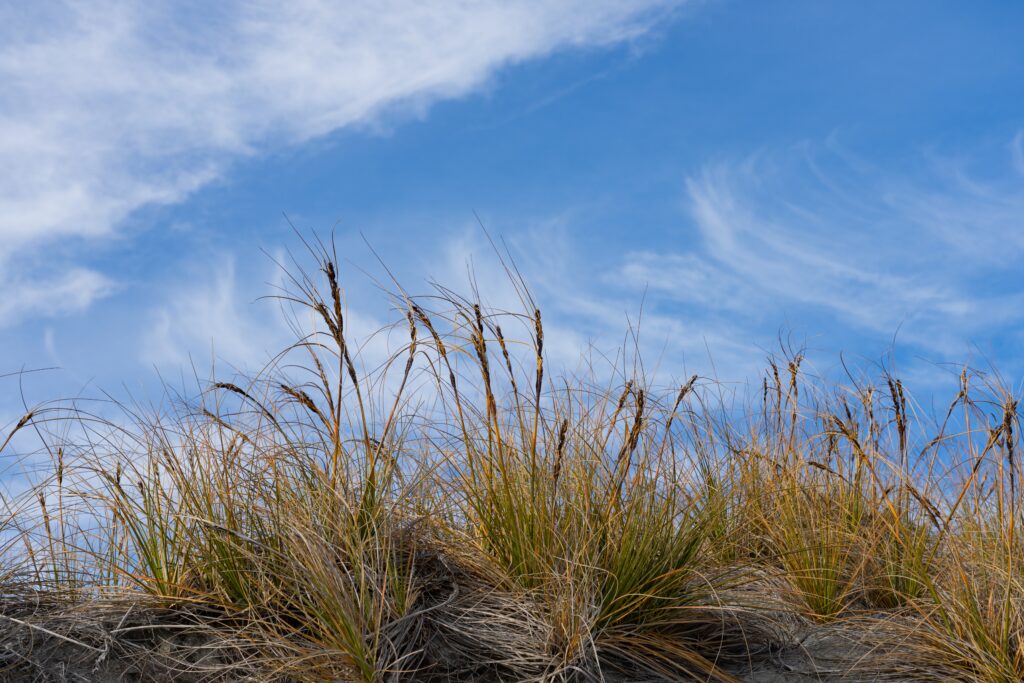
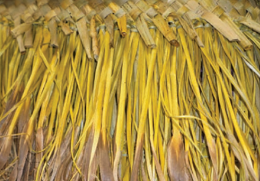
Seedlings are uncommon, are usually confined to damp hollows, and they are vulnerable to summer drought and inundation by sand during storms. Native birds and insects relish the presence of pīngao, it’s an important nesting site and food source for many rare birds, moth and butterfly. While it struggles to survive in its natural habitat, Kaitiaki Betsy Young, and others, have been successful in the harvest and propagation of seeds and in transplanting pīngao back into the ecosystem. This work requires ongoing commitment, funding and resources to maintain restorative activities in the long-term.
Pīngao was once a child of the sea, where she lived with her father, Tangaroa, and whānau. She shared a close relationship with all the other creatures of the ocean and moved freely about her taiao. One moonlit night, she was close to where the ocean meets the land playing with the waves and bioluminescent plankton. While Pīngao rested in the shallows near the shoreline she noticed a beautiful pale being dancing high on the Kokota. She watched, entranced as the moonlight illuminated the fine pale hair flicking and flowing around the graceful body of Toitoi as he swayed in the wind. Pīngao had never seen such a creature, and she fell madly in love with the beautiful and entrancing image of Toitoi. Night after night Pingao watched Toitoi dance in the
moonlight. Toitoi, being a vain creature, performed spectacularly enjoying the audience. Toitoi flirted with Pīngao his dance enticing her to come ashore. He called to her: “come to me Pīngao, your beauty will never be seen if you stay hidden in the ocean. Come to me and be my wife”.
In her excitement, Pīngao approached Tangaroa announcing: “I have fallen madly in love with Toitoi. He is the most beautiful and gracious creature I have ever seen. I must go ashore to meet Toitoi and become his wife? Tangaroa warned: “you are never to wander ashore Pīngao! Toitoi does not love you! It is dangerous, you do not belong on the whenua. You are a child of the sea, this is your home, here you have whānau, you are safe and loved”.
Pīngao’s dreams were crushed, but she continued to dream of meeting Toitoi. Her fascination grew to obsession, despite knowing that this would be impossible because of her father’s warning. Meeting Toitoi became her only wish, she could
think of nothing else. She did not want to disobey her parents, but Toitoi continued to call to her promising his love and enticing her ashore.
Eventually, the promise of finally meeting her beloved Toitoi became too much to resist. She told her father she was going to play with the waves and plankton close to the shore and that she would be back soon. Tangaroa warned her again “Stay in the ocean Pīngao, Toitoi is not for you”. When she arrived at Kokota, Toitoi’s graceful form called to her beckoning “Come to me Pīngao, come to me”.
As Pīngao left the ocean her first few steps seemed easy, but her body was transformed. Her beautiful green skin began to change to a golden yellow.
Alarmed by the change in her appearance, Pīngao paused, and in that moment she heard her father calling her back to the sea and her whānau. As she turned to reply to Tangaroa, she found she had become stuck in the silica sands of kokota. Pīngao panicked and cried out for her father to come and help.
Tangaroa was saddened by the sight of his daughter bound to the land, reaching and calling out to him. He could not help, her decision to disobey his warnings had sealed her fate. He called to her “Pīngao, my daughter I love you, but I am sorry I cannot help you. You must now stay between the shore and the ocean forever more.”
Pīngao turned to Toitoi for help but his back was turned. Tangaroa had been right, Toitoi would never love her. His vanity and ego would never allow him to marry Pīngao. Pīngao was heartbroken. Toitoi had rejected her, her many tears saturated the sand around her. As the sand absorbed her tears its hold on her strengthened. She became firmly rooted in the liminal space between shore and ocean. There she remains today binding the shoreline of Kokota. Her roots and foliage offering resources, sanctuary and sustenance for shellfish, insects, birds and Ngāti Kuri.
Pīngao is another of Ngāti Kuri ’s most prized taonga. This plant is most commonly used for hosting toheroa spat, dune stability, insect kai, nesting birds, and weaving. The pūrākau above speaks of the imperative role pīngao plays in the health of the dune environment. Ngāti Kuri has dedicated countless years to the restoration of pīngao along our coastline.
We have a saying, “he Pīngao ngā kaitiaki o ngā Toheroa,” meaning it is the kaitiaki of the Toheroa. There are two kinds of Pīngao that Ngāti Kuri collect – one from Te Kōkota, the other from Te Oneroa a Tōhē. The gold variety of Pīngao was once prominent across the Pārengarenga harbour. This variety is favoured by our weavers.
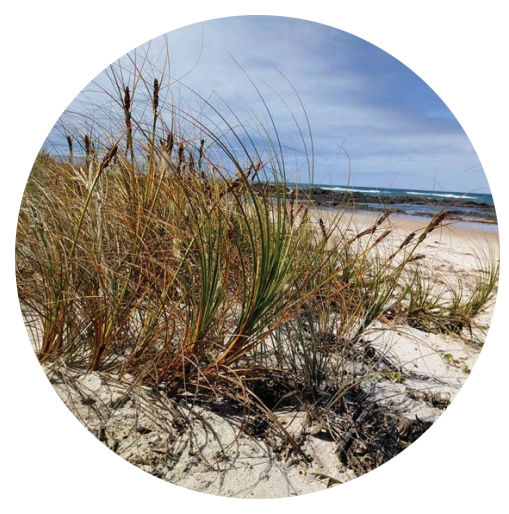
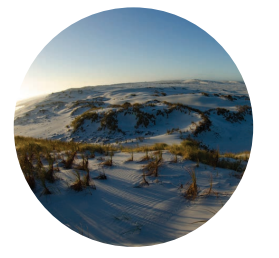
COPYRIGHT 2022 | POWERED BY WORDPRESS | BUILT BY POU DIGITAL